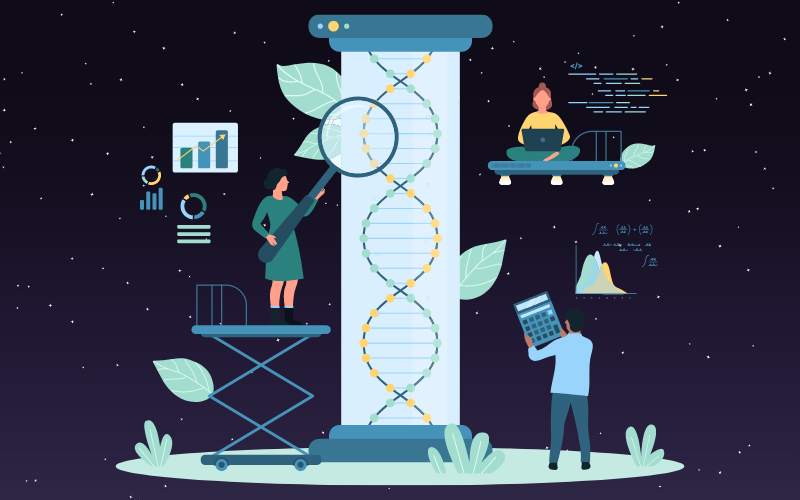
Scientists work tirelessly in the pursuit of truth. Through constant research, breakthroughs are identified all the time, with some more significant than others. The list below shows the 13 most important scientific discoveries of the 21st century. These are in no order implying significance, as that would be highly debatable. Some of these discoveries, breakthroughs, and theories have been pursued for years, making their recent validation all the more paramount.
Many of these 21st century scientific discoveries have furthered along research that has been unresolved for years. This does not imply that previous discoveries had less significance, but by the nature of the scientific method, these breakthroughs provide the missing information that many theories need in order to further along the research. The following 13 important 21st century scientific discoveries may be some of the most sophisticated and crucial findings of our time. If you enjoy science, please read on; you may be surprised by how much you have missed in the last 20 years, scientifically speaking.
The List of the 13 Most Important Scientific Discoveries of the 21st Century by Year
1. The Human Genome Project First Draft is Published
Year: 2001
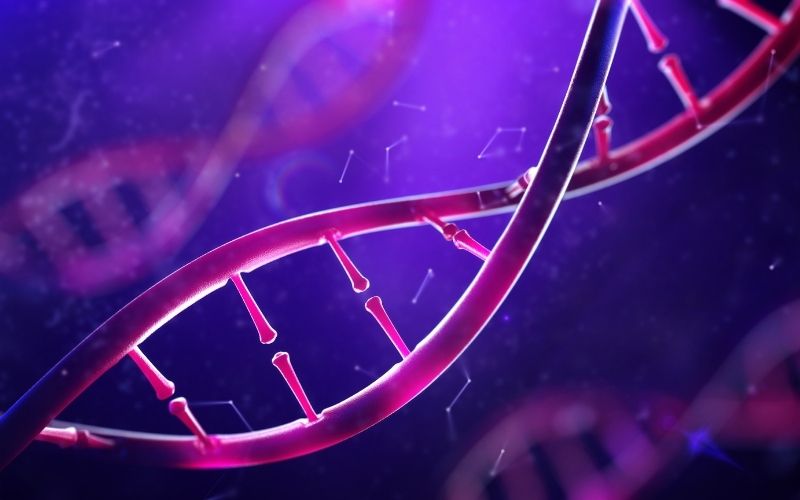
What is the Human Genome Project?
The Human Genome Project was a large worldwide research project. Its aim was to find, map, and sequence all the genes in the human genome, which is like a blueprint for our bodies. Its main aim was to figure out the building blocks of our DNA, called base pairs. It’s still to this day, the largest cooperative biology project ever done.
2001 Human Genome Project Breakthrough
The first papers about the initial version of the genome were published in February 2001. A group at the University of California in Santa Cruz, led by David Haussler and his student Jim Kent, did most of the work. They published a more complete version in 2003. In May 2006, they published the sequence of the last chromosome, which was a big milestone.
In March 2009, the Genome Reference Consortium released a more accurate version of the human genome, but there were still more than 300 missing parts. They used new techniques to sequence those missing parts from one end to the other. Finally, in 2022, they completed the entire sequence.
2001 Human Genome Project Breakthrough Significance
Sequencing the human genome has lots of advantages for different areas like medicine, healthcare, and studying human evolution. The Human Genome Project helps researchers learn more about diseases by looking at genes, finding mutations, creating better medicines, and even in fields like forensics, energy, and archaeology.
The first version of the Human Genome Project was really important in understanding human DNA and its role in many aspects of life. It’s one of the most significant scientific discoveries of the 21st century.
2. Proof of the Poincaré Conjecture
Year: 2003

What is the Poincaré Conjecture?
The Poincaré conjecture is a math rule that talks about a special shape called the 3-sphere. It was first thought up by Henri Poincaré in 1904. The rule says that if a space looks like regular 3D space but has a special property where every loop can be pulled tight to a point, then it has to be a 3D sphere.
2003 Poincaré Conjecture Breakthrough
Girgori Perelmen eventually solved the proof by coming up with new methods and adjusting Richard S. Hamilton’s approach using something called the Ricci flow. He shared his work through unpublished papers on arXiv in 2002 and 2003, which showed that he had proven the Poincaré conjecture. Many mathematicians studied these papers and built upon them to confirm and understand his work more thoroughly.
2003 Poincaré Conjecture Breakthrough Significance
Hamilton received the Shaw Prize and the Leroy P. Steele Prize for his important research. Science magazine declared Perelman’s proof of the Poincaré conjecture as the top scientific breakthrough in 2006. The Clay Mathematics Institute included the conjecture in their list of challenging problems and offered a prize of $1 million to anyone who could solve it. However, Perelman chose not to accept the prize.
The work done by Hamilton and Perelman on the Poincaré conjecture is considered a significant milestone in mathematics. Many advancements in geometric topology in the 20th century were motivated by attempts to solve this conjecture. Proving the Poincaré conjecture would certainly qualify as one of the most important scientific achievements of the 21st century.
3. Graphene is Isolated
Year: 2004

What is Graphene?
Graphene is a special type of carbon that is made up of a single layer of atoms arranged in a honeycomb pattern. It is very thin, strong, and can conduct electricity. It is considered a valuable nanomaterial with many applications in different industries.
2004 Graphene Isolation Discovery
Graphene was first theorized to exist but had never been intentionally created until 2004. Two scientists named Andre Geim and Konstantin Novoselov at the University of Manchester discovered, studied, and isolated graphene. Their work was so important that they received the Nobel Prize in Physics in 2010.
2004 Graphene Isolation Discovery Significance
The isolation of high-quality graphene turned out to be easier than expected. This remarkable nanomaterial is not only incredibly strong and conductive but also the thinnest two-dimensional material known. It has found applications in various fields, including smartphones, cars, tennis racquets, and more. Graphene has opened up new possibilities for exciting projects.
Although the idea of graphene has been explored since 1859, it took over 150 years to isolate and fully understand this nanomaterial. Because of its unique properties and potential uses, the discovery of graphene is considered one of the most significant scientific breakthroughs of the 21st century.
Read More Fun Facts
Learn more fun facts with Trivia Mastermind content.
4. Brain Grid Cells Discovered
Year: 2005
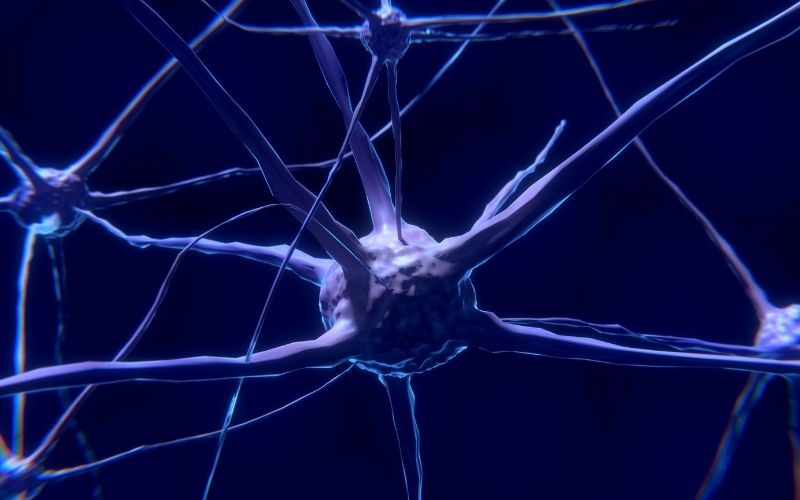
What are Brain Grid Cells?
Brain grid cells are a type of neuron found in the entorhinal cortex of the brain. These cells fire at regular intervals when animals move around in open areas. They help animals understand their position in space by storing and combining information about direction, distance, and location. Grid cells have been found in various animals, including mice, monkeys, rats, bats, and humans.
2005 Brain Grid Cells Discovery
In 2005, scientists Edvard Moser and May-Britt Moser discovered grid cells at the Centre for the Biology of Memory in Norway. They implanted an electrode in a rat’s dorsomedial entorhinal cortex to detect the activity of grid cells. The dorsomedial entorhinal cortex functions include being a widespread network hub for memory, navigation, and the perception of time. They recorded the neuron’s activity as the rat freely moved in an open area.
The data collected showed that when the neuron fired, the rat’s position was marked on a map of the area. Over time, these marks formed a pattern of equilateral triangles, creating a grid-like structure. This pattern was different from other cells that fire in response to spatial information but lack regularity.
2005 Brain Grid Cells Discovery Significance
The groundbreaking work of Edvard and May-Britt Moser led to their recognition with the Nobel Prize in Physiology or Medicine in 2014. Their discoveries about the brain’s positioning system and grid cells provided a deeper understanding of spatial activity in the entorhinal cortex. This knowledge has contributed to advancements in understanding cognitive processes and spatial impairments related to neurological conditions in humans. It is considered one of the most important scientific discoveries of the 21st century.
5. Synthetic Bacterial Cells are Constructed
Year: 2010

What are Constructed Synthetic Bacterial Cells?
Synthetic bacterial cells are cells that have been created in a lab by scientists. The first synthetic bacterial cell was created in 2010 by scientists at the J. Craig Venter Institute. The cell was created by synthesizing the DNA of a bacterium called Mycoplasma mycoides.
The DNA was synthesized using a computer and then assembled in a lab. The cell was then transplanted into another bacterium, which then started to reproduce. The creation of synthetic bacterial cells is a major breakthrough in science proving that genomes can be designed on a computer, constructed in a lab, and transplanted to a recipient cell.
2010 Synthetic Bacterial Cells Construction Breakthrough
The first step in creating these bacterial cells was to synthesize the DNA of the bacterium Mycoplasma mycoides. This was done using a computer program that was designed to create the DNA sequence. The DNA was then assembled in a lab using a process called “DNA assembly.” Once the DNA was assembled, it was transplanted into another bacterium called Mycoplasma capricolum. The bacterium then started to reproduce, and the synthetic DNA was passed on to the new cells.
2010 Synthetic Bacterial Cells Construction Breakthrough Significance
This discovery leads us into a new perspective of how we could view life and the benefits of such a breakthrough. The advantages of this scientific development includes gaining the ability to write genetic code, developing better pharmaceuticals, improving genetically modified foods, and more. Because of this, the construction of synthetic bacterial cells is an incredibly important scientific discovery of the 21st century.
6. The Neanderthal Genome Project Presents Interbreeding Evidence
Year: 2010

What is the Neanderthal Genome Project
The Neanderthal Genome Project is a scientific project that started in 2006. Its goal is to study the genetic makeup of Neanderthals by sequencing their genome. The project was led by a group of scientists, and they published their initial findings in 2010. They discovered that there was some mixing of genes between Neanderthals and modern humans (who are not from Africa). This means that some parts of the Neanderthal genome can still be found in the DNA of present-day humans.
2010 Neanderthal Genome Project Interbreeding Evidence Discovery
When the researchers released the draft of the sequenced Neanderthal genome, they found that the genetic contribution of Neanderthals to non-African modern humans ranged from 1% to 4%. They also found evidence that interbreeding between Neanderthals and modern humans occurred before modern humans migrated to Europe. However, there was some debate because Neanderthals and humans lived in the same place at the same time.
In 2015, scientists discovered a 55,000-year-old human skull in a cave in northern Israel. This finding suggested that modern humans were in that area at the time when they could have interbred with Neanderthals. The project confirmed in 2016 that Neanderthals and modern humans interbred multiple times.
More recently, researchers found that a modern human who lived about 40,000 years ago had between 6% and 9% Neanderthal DNA. This discovery challenged previous ideas that modern humans replaced Neanderthals without any interbreeding. It showed that there was intermixing between the two groups. However, since Neanderthals lived only in Eurasia, most of the genes in our genome still come from Africa.
2010 Neanderthal Genome Project Interbreeding Evidence Discovery Significance
With this new information, our previous scientific belief around the evolution of life has expanded. With that, we now understand that in some cases, the modern human did not outright replace the Neanderthal, but there was in fact, some interbreeding taking place along with evolution, making this 21st century scientific discovery very important.
Play Trivia!
Challenge yourself and play trivia questions with answers and explanations.
7. Higgs Boson is Discovered
Year: 2012
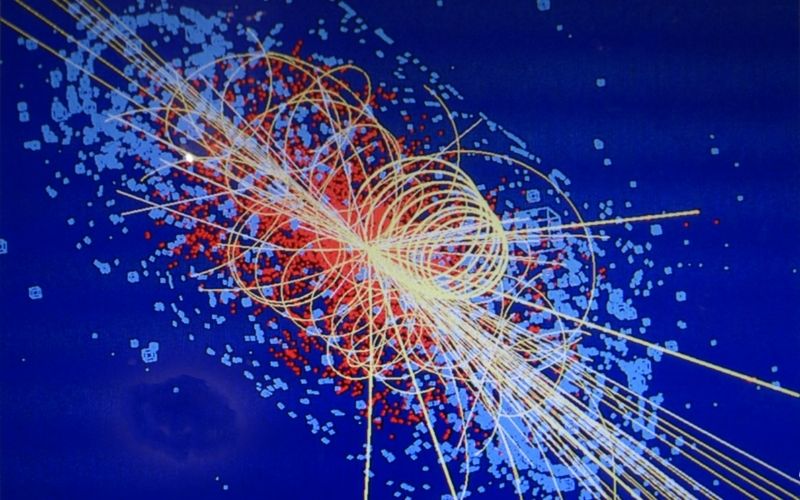
What is the Higgs Boson?
The Higgs boson is a tiny particle that exists according to the Standard Model of particle physics. It’s part of something called the Higgs field, which is a field of energy that fills the universe. This particle is named after a physicist Peter Higgs.
The Higgs boson is a special type of particle. It has no electric charge, no color charge, and zero spin. It interacts with mass and is very unstable, meaning it quickly decays into other particles.
The Higgs field is a field that gives other particles their mass. It has different components, some of which are neutral and some are electrically charged. This field breaks a symmetry in the way particles interact, and that’s what gives them their mass.
2012 Higgs Boson Breakthrough
In 2012, scientists at the ATLAS and CMS experiments at the Large Hadron Collider at CERN, made a breakthrough. They found a particle that matched the expected properties of the Higgs boson. This discovery confirmed the existence of the Higgs field and its properties.
2012 Higgs Boson Breakthrough Significance
This discovery is significant because it confirms what scientists already knew about the Higgs field and particle physics. It helps us understand the basic building blocks of matter better. In recognition of their work, François Englert and Peter Higgs were awarded the Nobel Prize in Physics in 2013
8. Photonic Molecules are Discovered
Year: 2012

What are Photonic Molecules?
Photonic molecules can be made artificially when photons bind together to form “molecules.” Theoretically, they are also a natural form of matter. They were first predicted in 2007.
2012 Photonic Molecules Breakthrough
A team of scientists, led by Vladan Vuletic from MIT and Professor Mikhail Lukin from Harvard University, discovered something interesting called photonic molecules. They published their findings in the Science journal. Basically, they observed that groups of three photons can stick together and create a new kind of light matter.
To make this happen, they used a weak laser beam and aimed it at a bunch of very cold rubidium atoms. The photons from the laser beam would bind together in pairs or groups of three. The researchers noticed that these bound photons became heavier, like they had gained some mass from the atoms. They also moved slower than regular photons that don’t interact with each other.
The scientists came up with a theory to explain why the photons were interacting. They proposed that when a photon travels through the cloud of rubidium atoms, it briefly lands on one atom before jumping to another, and this happens repeatedly until it reaches the other side.
2012 Photonic Molecule Breakthrough Significance
This scientific discovery made in the 21st century is really important because the photons that interact with each other can be considered “entangled.” This means they have a special connection, which is very useful for quantum computing. When photons can affect each other, we can use them to share quantum information in a really beneficial manner.
9. Exotic Hadrons are Discovered
Year: 2014

What are Exotic Hadrons?
Hadrons are tiny particles made up of quarks. Quarks usually combine in groups of twos and threes, but scientists have predicted that they could also combine in groups of four and five. These groups of quarks are called tetraquarks and pentaquarks. In recent years, scientists have confirmed the existence of several exotic hadrons. These hadrons were discovered by the LHCb experiments, which are particle accelerators at CERN. The discovery was published and presented at a seminar at CERN in 2020.
2014 Exotic Hadrons Discovery
Scientists found a brand new kind of particle that had never been seen before. They discovered it using a method called “particle hunting,” where they looked for more collisions happening than usual. They noticed a bump in the way the particles were distributed after studying all the data from the Large Hadron Collider.
2014 Exotic Hadrons Discovery Significance
Quarks are the smallest particles that make up all matter. They are so small that we can’t see them, but we know they exist because of the way they interact with each other. Scientists have been studying quarks for many years, and they have learned a lot about them. But there is still a lot we don’t know.
The discovery of quarks is one of the most important discoveries of the 21st century, helping us to understand the universe in a way that we never could before. It will help physicists better understand the elementary particle, and it will help scientists further understand the complex ways in which quarks bind themselves together and form composites. Having more knowledge of the strong interaction is also essential for determining whether new, unexpected processes are a sign of new physics or just standard physics. This is because the strong interaction is the force that holds quarks together, and it is the strongest force in the universe.
10. Black Hole Merger Gravitational Waves Detected
Year: 2016
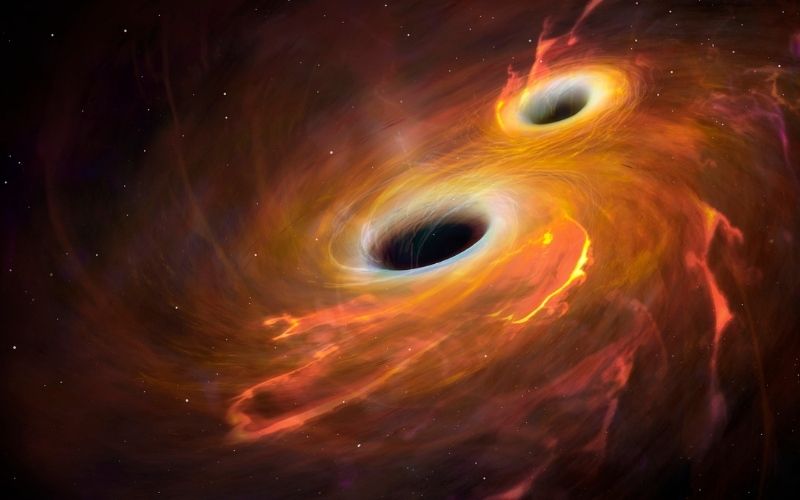
What are Black Hole Merger Gravitational Waves?
Black Hole Merger Gravitational Waves are ripples in the fabric of space caused by the collision of two black holes. These waves were predicted but had never been seen before. In 2015, scientists at the Laser Interferometer Gravitational-wave Observatory (LIGO) detected these waves using special detectors in Louisiana and Washington. This discovery was a big deal because it was the first time gravitational waves were directly observed. Scientists measured the small changes in space and time caused by the waves as they passed through the Earth.
2016 Black Hole Merger Gravitational Waves Breakthrough
In 2016, LIGO scientists estimated that this black hole collision happened about 1.3 billion years ago. The black holes involved were more than 29 times heavier than the Sun. In just a fraction of a second, the gravitational waves converted into about three times the mass of the Sun. The power generated by this event was about 50 times greater than anything we have ever observed in the entire universe. The source of the waves was located in the Southern Hemisphere.
The Advanced LIGO detectors, an upgraded version of the first-generation ones, played a crucial role in this breakthrough. They could explore a much larger part of the universe, leading to the discovery of gravitational waves during their first observation run.
2016 Black Hole Merger Gravitational Waves Breakthrough Significance
This discovery is significant because it achieved the goal of directly detecting gravitational waves, something scientists had been striving for. It confirms a major prediction made by Albert Einstein’s theory of relativity in 1915 and gives us an incredible new way to explore and understand the cosmos. It’s considered one of the most important discoveries of the 21st century.
11. Gravitational Wave Signal GW170817 Observed
Year: 2017
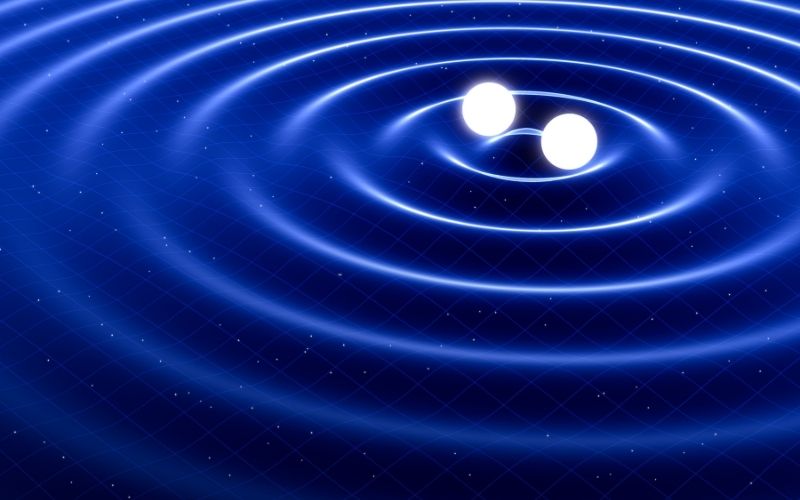
What is Gravitational Wave Signal GW170817?
Gravitational wave signal GW170817 was the first time we saw a gravitational wave event and light at the same time. This was a significant milestone for studying space using different kinds of signals. Scientists from LIGO/Virgo saw it happen in 2017.
2017 Gravitational Wave Signal GW170817 Breakthrough
The LIGO and Virgo detectors saw a gravitational wave signal coming from the NGC 4993 galaxy. This wave was created when two neutron stars spun around each other and then joined together. It’s the first time we’ve confirmed a gravitational wave using other methods beyond gravity.
2017 Gravitational Wave Signal GW170817 Breakthrough Significance
After the merging happened, 70 observatories on all 7 continents looked at what happened using different kinds of light. This was one of the biggest discoveries of the 21st century. The journal of Science gave it the Breakthrough of the Year award in 2017. Scientists from all over the world were really interested in this and wrote papers about it. Almost 4,000 astronomers from over 900 places worked together to describe what they saw using different kinds of signals.
12. First Image of Blackhole Captured
Year: 2019
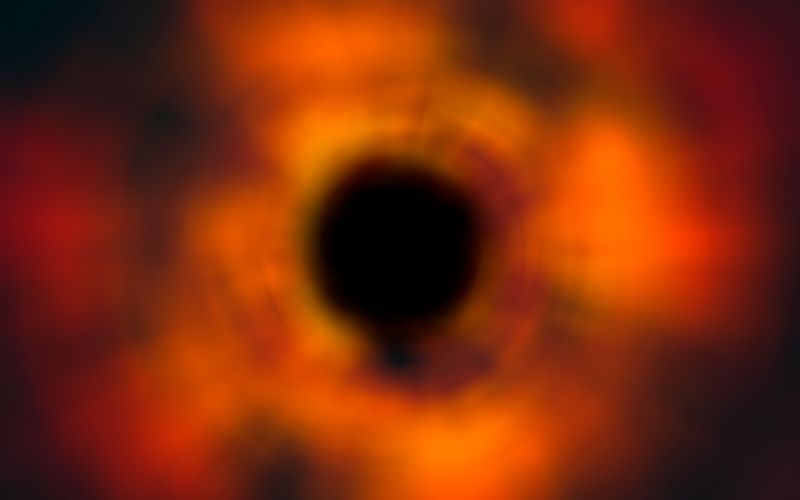
What are Black Hole Merger Gravitational Waves?
In the past, it was believe that taking a picture of a black hole was impossible because no light can escape, making the picture come out, all black. But scientists have been working on a way to capture a picture of gas falling into a black hole, from thousands of light-years away.
2019 Black Hole Merger Gravitational Waves Breakthrough
In 2019, a group of astronomers from different countries took a picture of a black hole’s outline. People have know that black holes exist because astronomers had seen their effects on things around them, but no one had ever directly captured a picture of one.
A team worked together for more than ten years to accomplish this task. They created a group of telescopes called the Event Horizon Telescope (EHT) to take the picture. They used a special technique called Very Long Baseline Interferometry to improve how we can see faraway objects. By improving this technique, they were able to detect the outline of the glowing gas that surrounds the black hole’s event horizon.
2019 Black Hole Merger Gravitational Waves Breakthrough Significance
Studying these mysterious structures can help students learn about gravity and how our universe changes over time. It gives us a better understanding of physics and lets us test different ways of observing things and theories, like Einstein’s theory of general relativity. One really important result of the EHT black hole imaging project is that we can now calculate a black hole’s mass more accurately than ever before. This is a big deal and makes it one of the most important scientific discoveries of the 21st century.
13. Water Discovered on the Moon
Year: 2020
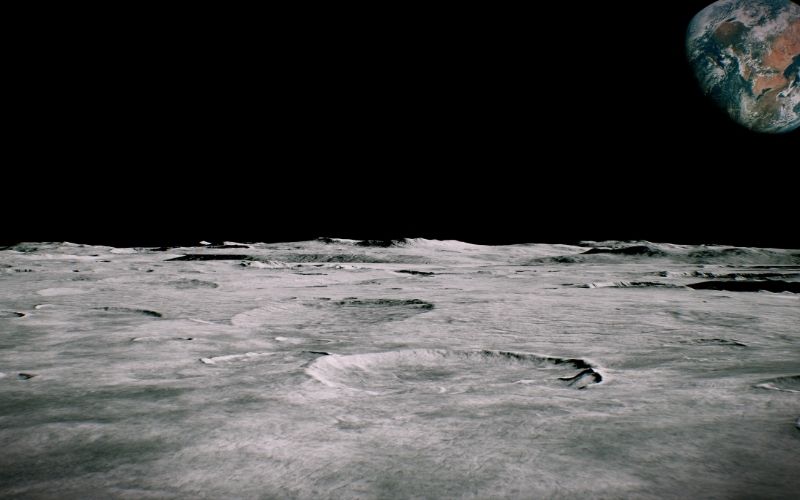
Possibility of Water on the Moon
When the Apollo astronauts came back from the Moon in 1969, people believed it was completely without water. But in the last 20 years, missions with orbiters and impactors showed that there is actually ice in the shaded craters near the Moon’s poles. A spacecraft also found signs of water in sunnier areas. However, during those missions, they could not distinguish if what they had observed was H2O or OH.
2020 Water Discovered on the Moon
In 2020, NASA’s SOFIA (Stratospheric Observatory for Infrared Astronomy) made a big discovery. Water was found on the sunny part of the Moon’s surface, which is the first time this had been confirmed. This means that water could exist all over the Moon, not just in the cold and dark areas. The findings from SOFIA add to what scientists have learned over the years.
The water molecules were found in the Clavius Crater in the southern part of the Moon. This crater is one of the biggest ones we can see from Earth. In the past, it was hard to tell if what they observed was water or something called hydroxyl. But now, they have proof of water in amounts of 100 to 412 parts per million per cubic meter of soil. The results were published in the latest issue of Nature Astronomy.
2020 Water Discovered on the Moon Significance
This discovery brings up new questions about how water forms and stays on the Moon. Water is really important in outer space as it fuels life and it is scarce, but we still don’t know if the water we found can be easily used as a resource. NASA is really excited to learn more about the water on the Moon. They want to understand it better as they’re planning to host sustainable life on the Moon by the end of the next ten years. This makes it one of the most important scientific discoveries of this century.
Conclusion
In conclusion, the 21st century has already seen remarkable scientific breakthroughs that have revolutionized our understanding of the world and expanded the boundaries of human knowledge. From the first direct observation of a black hole’s silhouette to the confirmation of water on the Moon’s surface, these discoveries have ignited our curiosity and opened up new avenues of exploration. They have deepened our understanding of the universe, shed light on the origins of life, and provided us with valuable insights into fundamental scientific principles. As we continue to delve into the mysteries of our existence, these discoveries will undoubtedly serve as the foundation for further scientific advancements, shaping the future of our species and the world we inhabit.
Read More Fun Facts
Learn more fun facts with Trivia Mastermind content.
Play Trivia!
Challenge yourself and play trivia questions with answers and explanations.
Recent Posts
Science Trivia - Astronomy ...
Step into a realm of nostalgia as we embark on a journey through the annals of pop culture and bid farewell to 35 recently obsolete technologies. In the ever-evolving landscape of innovation, certain...


